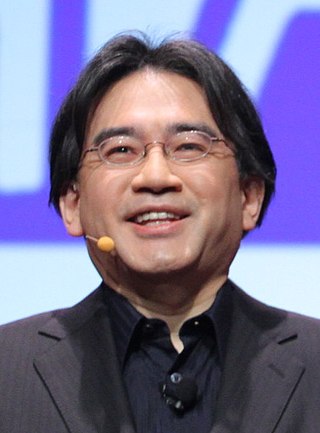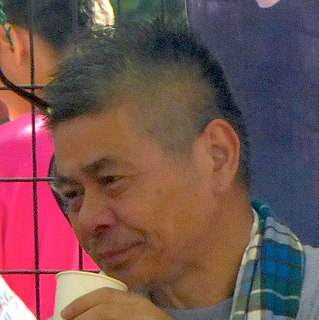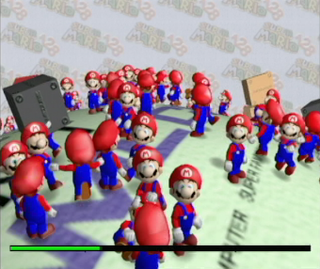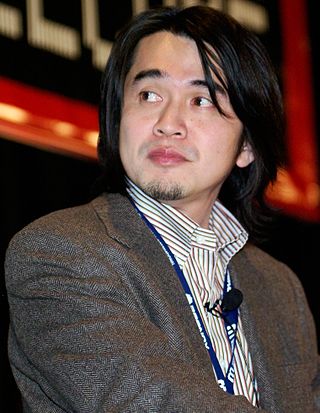Nintendo 64
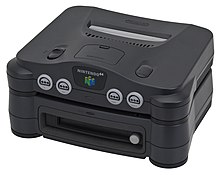
Mother 3 was originally developed for the Super Famicom (Super Nintendo Entertainment System) beginning in 1994. [1] Shigeru Miyamoto, head of Nintendo Entertainment Analysis & Development and Mother 3 producer, said that Mother 3 was "a commercial decision", since Mother 2 ( EarthBound outside Japan) had sold well. [1] By this point, Mother series creator Shigesato Itoi had worked on the series' earlier games and Itoi Shigesato no Bass Tsuri No. 1 and was experienced at pitching video games, so Miyamoto provided a team willingly. The Mother 2 development team carried over to the new game's development, though several people left and the team grew in size. They forwent the usual prototyping phase and went straight into development expecting to create something unprecedented. Itoi said he wanted to make the game like a Hollywood film. [1] In September 1994, he predicted that Mother 3's development would end around 1996 with a release on Nintendo's then-upcoming console. [2] The team was inspired by Super Mario 64 and decided that they too could creatively flourish by making a 3D open world. Their early technical specifications exceeded the capabilities and memory limits of the platform. About halfway through development, the team attempted to scale back its large scope and changed its target from cartridge [1] to the 64DD peripheral. [3] At E3 in June 1997, Miyamoto speculated that Mother 3 would be one of the four games for the then-expected 1998 launch of the Japan-only peripheral. [4] [5] [6]
The EarthBound fan community anticipated a sequel, and a North American release of Mother 3 was announced as EarthBound 64. [7] Nintendo displayed a playable version of the game at its Space World 1999 trade show, where IGN described the development's progress as "very far along" [8] and half complete. Having followed a period of media silence, the announcement there of its conversion from 64DD disk to 256 megabit cartridge plus mission expansion disk was taken by IGN as a sign of further delay or cancellation of the 64DD altogether. [9] [10] In April 2000, IGN estimated the game's development as "safe to assume that the game is nearing its final stages of completion". [8] The company struggled to find a firm release date, [11] and was expected to release in Japan before a North American version would be considered. [8] At the time, the 64DD was only released in Japan. [3] Nintendo did not show the game at the 2000 Electronic Entertainment Expo, though IGN expected to see a finished version of the game at Space World 2000. [8] Mother producer Satoru Iwata canceled the game altogether prior to Space World 2000, [1] as announced by Itoi on August 20. [12] [10]
Iwata clarified that the franchise was not abandoned but that the game would no longer be developed for the Nintendo 64, and Miyamoto added that it was not due to project complications or development hell, but to resources needed for Project Dolphin (the GameCube). Some of the artists had been on the project for over three years. They estimated the project to be about 60 percent complete at the time of cancellation—the basics were complete and only programming was left. About 30 percent of the final product was completed. Itoi estimated that it would have taken an additional two years to finish properly, and Iwata said that the game might have been finished by 2000 had the scope been reduced two years earlier. Miyamoto was involved in other work and spent little time on-site with the project, and Iwata too was distracted by bankruptcy concerns at HAL Labs and was off-site in 1999 due to circumstances that required travel. Iwata was also hospitalized during production for stress-related reasons. The team intended to have the game finished by the end of 1999 and knew they had to reconsider their priorities when they missed the milestone. They said that the Mother 3 supervisors had wanted to cancel the project since 1999, but later changed sides and said that cancellation would be wasteful. They discussed bringing the game to their forthcoming GameCube, which Miyamoto said would have solved some of the Nintendo 64's hardware issues. Miyamoto and Iwata also discussed releasing the game on the Game Boy Advance, but realized that it would take "just as much time" with 40 to 50 staff members to make such a game. In retrospect, Iwata wondered out loud in an interview why the game needed to be in 3D when Itoi's "greatest talent lies in words" and thought that the energy poured into making a 3D game might have been a poor choice. He said he was "genuinely ashamed", and acknowledged that they were both "caught up in the 3D obsession and felt obligated" at the time. At the time of its cancellation, Itoi predicted that Mother 3 would remain a story that only the game's staff would know, though he also expressed an interest in making the story into a novel or kamishibai if he had the time. Miyamoto was still interested in bringing the game to fruition. [1]
Design

Itoi conceived the premise of Mother 3 towards the end of Mother 2's production. He called another person on the project to describe a "detective story where the city was the main character". [1] He envisioned a hack, small-time, womanizing private investigator who would become engrossed in a big murder case, and the story would unfold from a young female clerk at a flower shop who would slowly recall parts of a story consequential to the plot. Thus, the city would appear to grow. This idea of a "single place changing over time" was central to Mother 3. [1] He saw previous RPGs as "road movies" with little reason for the hero to backtrack to previous areas, and instead wanted the player to see the town gossip grow dynamically. [1] Miyamoto and Itoi compared this type of progression to the story of Legend of Zelda: Majora's Mask . The game was enough of a departure from the series that the development team questioned whether fans would consider it part of the series. [1]
Itoi originally intended the game to have 12 chapters with varied game mechanics; for example, one with classic role-playing game mechanics and another as just cutscenes. He conceptualized the process as designing 3D "puppets" that could then be easily moved around the "stage". [1] In actuality, each custom scene required special programming. The player-character changed between each chapter—a concept they first attempted in their previous game—so as to see multiple characters grow. As development wore on, Itoi offered to compromise by replacing full chapters with sequences of still images and text. They cut the total chapters to seven or nine by the time it was canceled. Itoi described the story as "normal" for its first half, leading up to a "triple-play twist". [1] One of the game's themes was the reckless appearance and "uncomfortable beauty" of chimera—multiple creatures fused into one—which was the idea behind the metallic and wooden Mother 3 logo. [1] Itoi has said of his role in the Mother series that he wanted to be more of a team member and scriptwriter and less of a manager in Mother 3's development. He saw himself as simultaneously making the game he wanted to play and setting traps for the player, and as making a game Nintendo could not. [1]
My personal feelings steer me to want to affirm everything the player thinks about the game. I wanted to make Mother 3 like a mirror. One that reflects the heart of the player off of the screen.
Itoi in an interview with Nintendo Dream, August 2006 [13]
The Mother 3 logo was made from a fusion of metal and trees, which Itoi interpreted as an "uncomfortable beauty" from two materials that were impossible to fuse. [1] This is also a theme in his only novel. [13] The chimeras theme informed the game's original subtitle: "Forest of the Chimeras". [1] Itoi compared the reckless appearance of chimeras to the mutilated toys of Sid from Toy Story . [1] The subtitle eventually became "The End of the Pig King" before the game was canceled [9] and the final release has no subtitle because Itoi did not want to lead the player's interpretation. [13]
The game was set to continue 10 years after the first Mother. The player-character, Flint, was a cowboy in the vein of Clint Eastwood with two boys, Lucca and Klaus (later becoming Lucas and Claus), and a dog, Boney. The game was to include over 10 playable characters and span 10 years in its story based around the Pig army, which attempts to use "primitive machinery ... to enslave mankind". [9] At Space World 1999, IGN sampled environments including a hovercraft in a desert canyon, a snake dungeon, a cutscene with a bullet train, a town with non-player characters, and a mine cart scene, through themes including fantasy, the medieval, and science fiction. Physical contact with an enemy in the overworld triggered a turn-based battle scene shown in the first-person (similar to EarthBound). The battles had psychedelic backgrounds and a circular menu that included a command to "get up" if the player was knocked down in a real-time sequence. [9] Attacks could be timed with the in-game music for stronger effects. The developers also planned multiple routes for advancing through the game and unforeseen complications from minor actions, such as a monster finding food dropped in the forest. The game was set to include features such as synching the game's time with the real time, but those features required the 64DD. Mother 3 was set to run between 40 and 60 hours in length. [9]
Reception

In its review of the Space World 1999 demo, IGN found the mine cart scene—where Lucca and Klaus outrun a collapsing cave in a minecart—to be its "most impressive" sequence. [9] They added that it "might be one of the most impressive cutscenes on the N64 yet". [9] IGN said that the controls were intuitive, the sound "well orchestrated and memorable", [9] the 3D game engine "strong", and the battle system "confusing". [14] They wrote that the game would be highly original, but were not able to tell the degree to which the story or characters would interact. IGN compared the multi-character aspect of the narrative to the Japan-only Super Famicom RPG Live A Live . [9] Famitsu readers ranked the game as one of their top ten most anticipated towards the end of 1999. [15]











